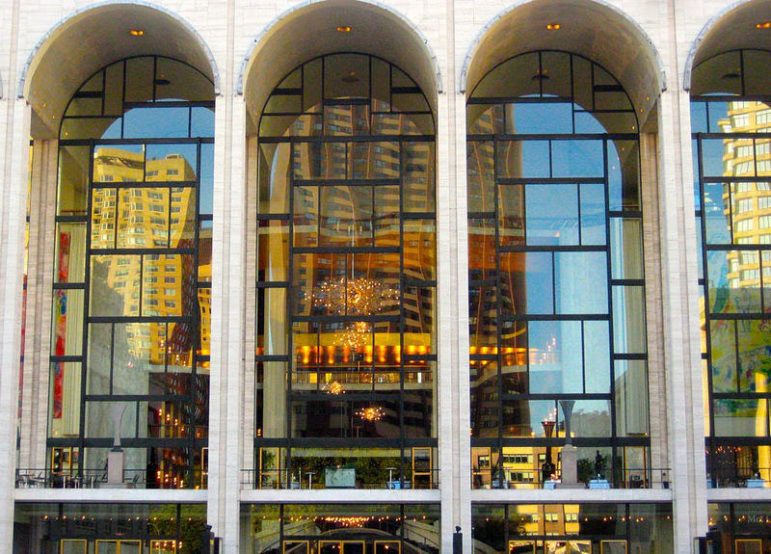
August 17, 2016; Wall Street Journal
Following yet another turbulent financial year, the Metropolitan Opera’s staff can breathe a sigh of relief as the company reveals it is on track to balance its budget for the second year in a row. This good news comes on the heels of James Levine’s retirement announcement earlier in the summer and augurs the beginning of a positive new chapter under its newly appointed music director, Yannick Nézet-Séguin.
Yet one pesky challenge still remains: What to do about those falling ticket sales? Though the company is far from the dire straits in which it found itself two years ago with its punishing labor battle, the company has not been able to reverse the downward trend of its box office sales in the last few seasons. Some also question the slow rate at which the Met has rebuilt its endowment. According to officials, the Met only made 66 percent of its potential box office revenue in fiscal year 2015, and there is growing cause for concern that those shrinking attendance numbers won’t go up any time soon.
According to Peter Gelb, the Met’s general manager, the opera house was able to make up for its low ticket sales in fiscal year 2016 with deeper expense cuts and “of course, relying on the generosity of our donors.” For the many who question the relevance and significance of opera in today’s society, the Met’s dismal box office numbers and growing reliance on private funding are yet more signs that opera is increasingly regarded as elitist and irrelevant to the general public. The Met’s sumptuous 3,800-seat home at Lincoln Center often is less than 72 percent filled. Mr. Gelb insists that the Met’s aging subscriber base is to blame for flaccid ticket sales. But even he acknowledges that “across the board and in the U.S. and in Europe…the core opera audience is shrinking.” What to do to reverse this trend? And is opera even worth saving?
Sign up for our free newsletters
Subscribe to NPQ's newsletters to have our top stories delivered directly to your inbox.
By signing up, you agree to our privacy policy and terms of use, and to receive messages from NPQ and our partners.
For the hundreds of musicians and thousands of fervent opera lovers who flock to the Met, the answer is an emphatic “yes.” Though the house is not filled to capacity, the growing role of donations in maintaining operations at the Met, as well as peer arts institutions, is not a sign for alarm. The arts have always benefited from private support; wealthy patrons supporting young artistic talent has been common since the Renaissance, and some could argue that today’s private donors have merely institutionalized that practice by supporting organizations, rather than individuals. Donations help to subsidize ticket costs, making a night at the opera more accessible to the average individual and bringing the art form down from its aristocratic origins. Marketing strategists in the arts work to attract single-ticket buyers and new audiences at an affordable price point with the hope that they will become hooked and stick around as loyal patrons for their entire lives.
Elsewhere in the United States, the future of opera looks more optimistic. Attendance numbers at eleven opera companies with an annual operating budget of more than $10 million sold 79 percent of their seating capacity in fiscal year 2014. National Endowment for the Arts survey data from 2002 and 2012 showed an increase in the rate of attendance among adults aged 35 to 44 years old.
Though it may appear on the surface that the Met’s delicate financial footing is an indication of opera’s lack of mainstream appeal, if one digs below the surface the underlying causes are more complicated. In fiscal year 2015, the Met reported unfunded pension obligations of $88.2 million, which was almost as much as that year’s box office and touring revenue. That $88.2 million is defined as the difference between the estimated value of how much the Met owes its participants and the fair value of the plan’s assets. In fiscal year 2015, the plan was about 69 percent funded. Each year, the Met pays the federally required minimum into the plan, and Mr. Gelb calls the pension program “a cause of ongoing concern for the Met and its employees.” In the past few years, the Met’s liability has ranged from as high as $124.4 million in fiscal year 2012 to $68.4 million the following year. The headache that a shifting financial burden like the pension fund, influenced by variables including mortality rates, investment returns, and employer contribution levels, surely causes to the chief financial officer and others inside the Met must be acute.
So will tepid box office sales begin to heat up as a new generation of operagoers becomes more engaged with the genre? Or will the venerable opera house suffocate under the weight of its challenging financial obligations? Gelb and other leaders in the opera world are hoping and betting on the former, rather than the latter. In the meantime, the organization must rethink and rework its operations from the inside out in order to build on a successful second year in the black so it is in a sustainable position to be able to welcome these future audiences when the time comes.—Sophie A. Lewis











